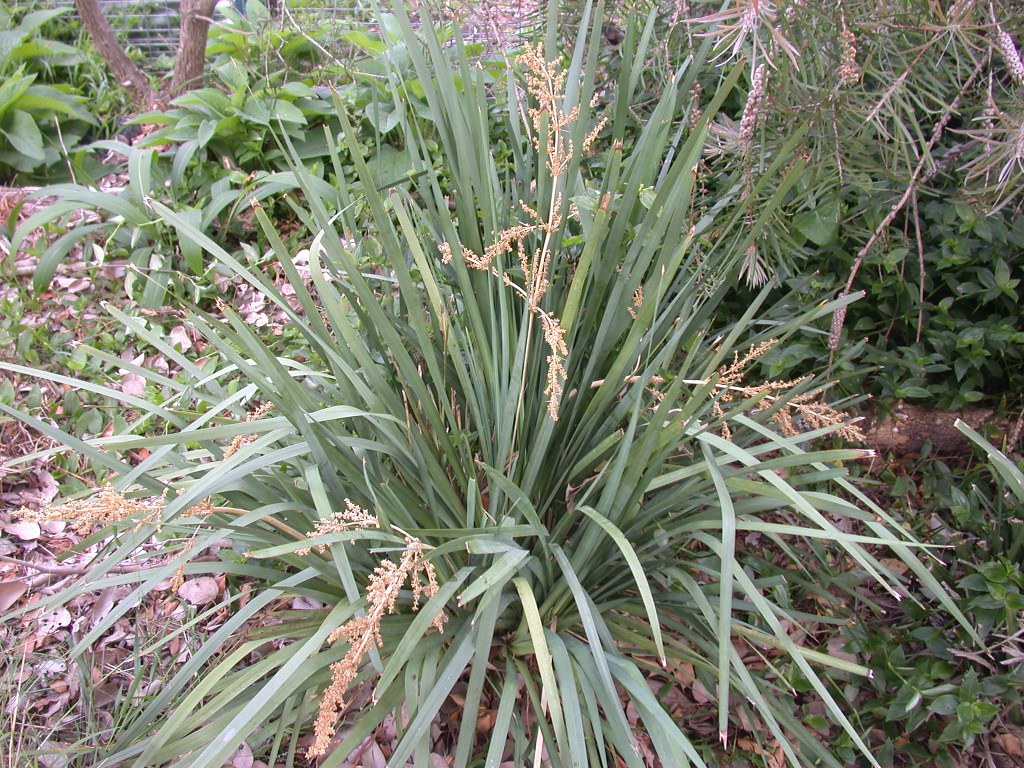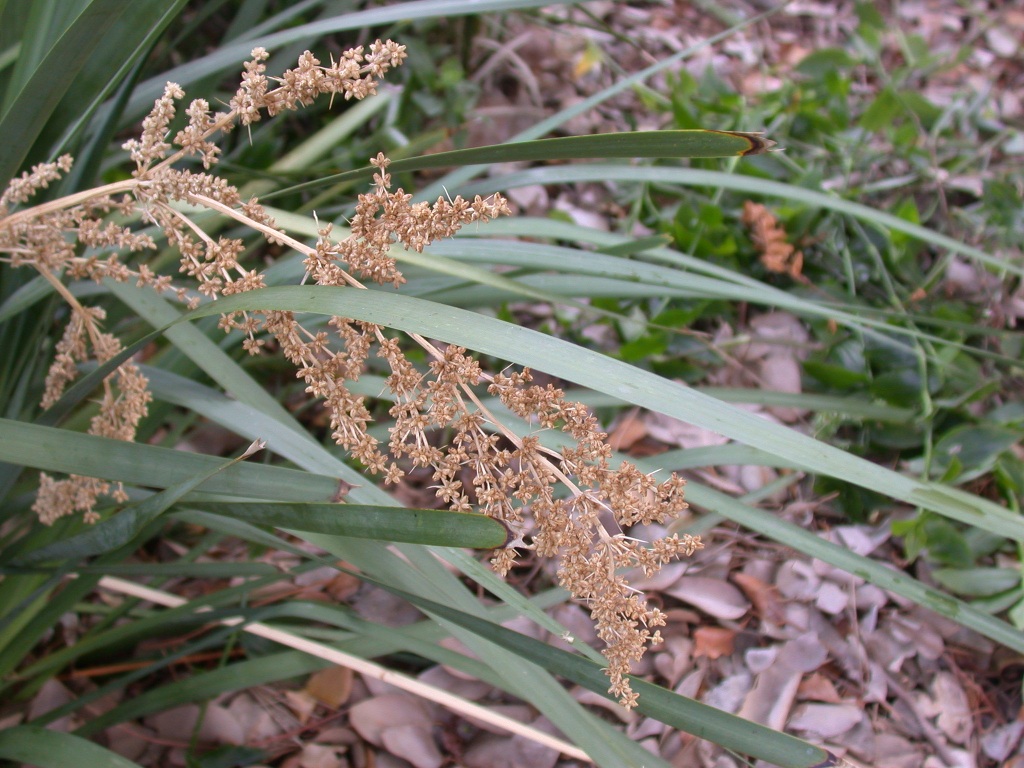Fruits/Seeds
Globular capsule. Mature then turn brown.
Field Guide
Improve your identification skills. Download your Spiny-headed Mat-rush field guide here!

Perennial, rhizomatous herb with strappy leaves.
Glossy green, firm and flat. Long and thin up to 1 m long and roughly 1 cm wide. Leaves are usually taller than the flowering stem. Leaf base is broad with brownish edges. Tips of leaves have teeth.
Grow in a whorled cluster attached to a straw-coloured bracts. Individual flowers are roughly 4mm long, but the cluster and leaf grow to 50 cm. Have a strong scent. Flower head is brown – during flowering petals are creamy yellow.
Globular capsule. Mature then turn brown.
Improve your identification skills. Download your Spiny-headed Mat-rush field guide here!

First fully open single flower
Full flowering (record all days)
End of flowering (when 95% of the flowers have faded)
No flowering
Fruiting


Lomandra hystrix differs in leaf apex and contains paler flowers.